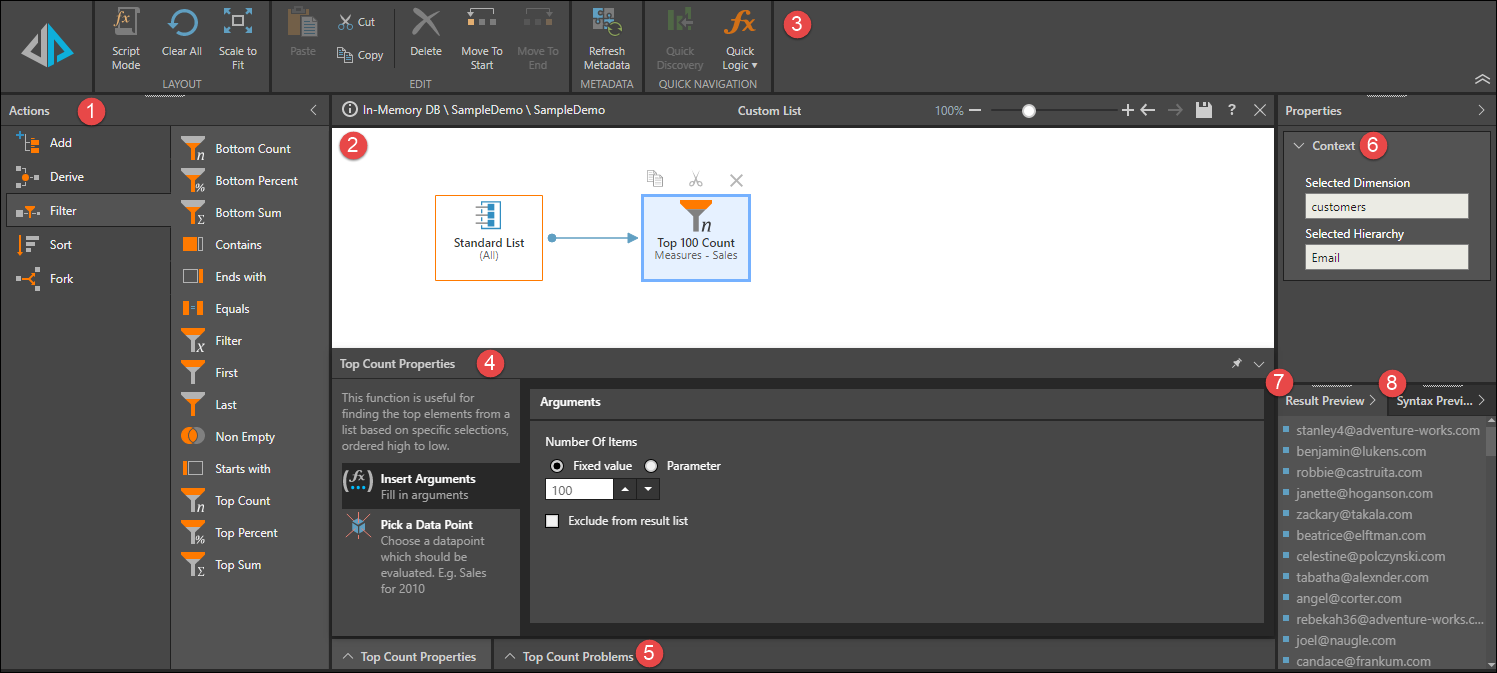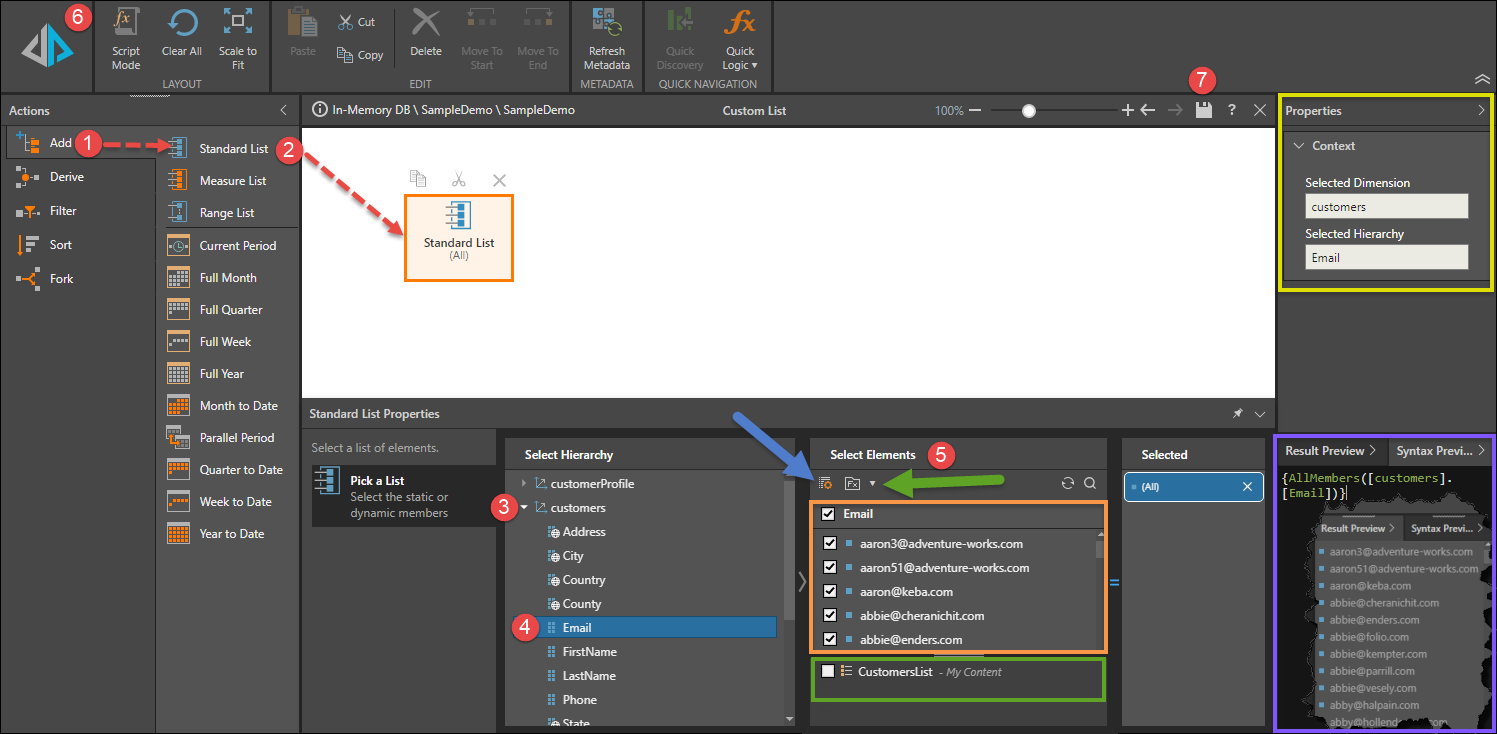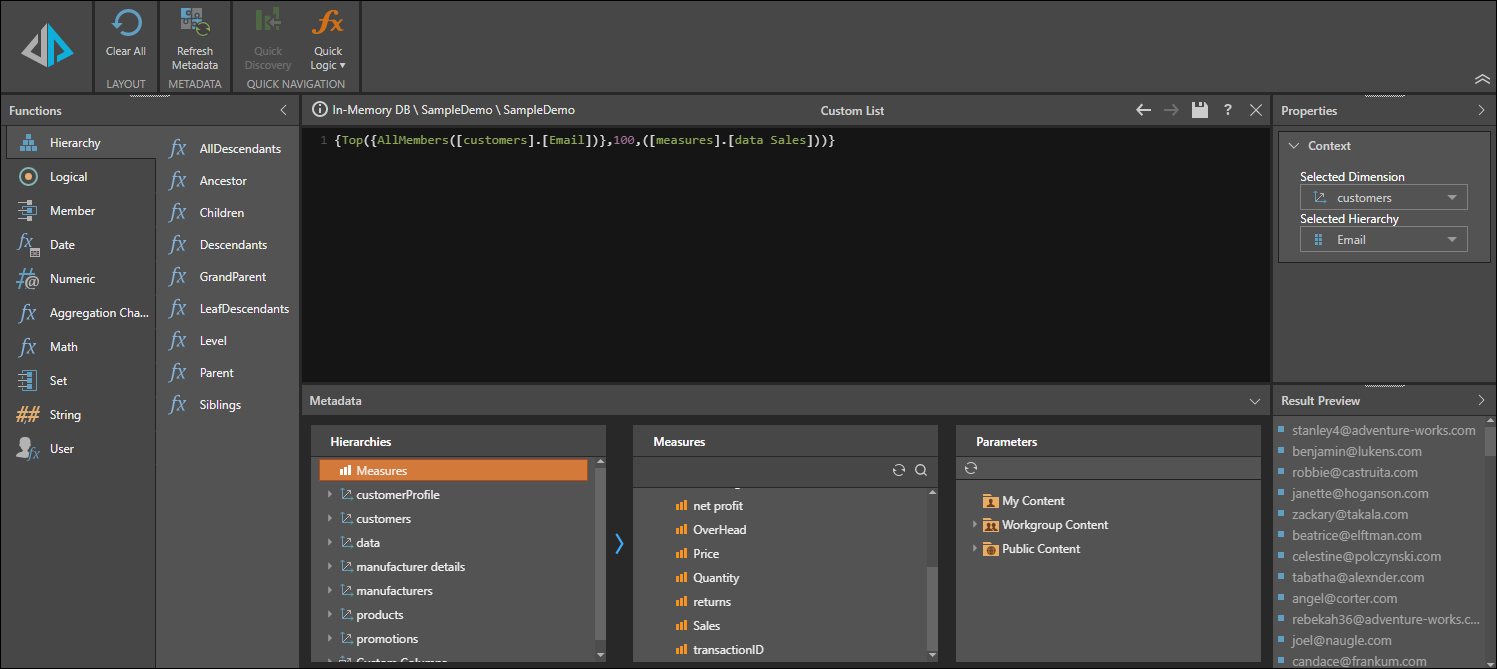The List Designer is for building custom lists or "sets" derived from data in a data model. A list, therefore, is a user-defined group of elements, from a single hierarchy in the data model. It offers users a convenient way to add multiple elements anywhere within their query. For instance, you may want create a custom list of the top 100 customers by sales which can then be added directly to reports, dashboards and publications to drive queries.
Lists can also be combined and nested within other formulate objects, like custom formulas.
Lists of elements can be manually selected in the Discover tools by end users without the designer through the 'element trees'. These, however, are temporary and do not contain any selection logic. When there is a need to remember the selection, or drive the selection through logic, users can build lists with the designer or create them with 'quick list' capabilities directly in Discover. "Quick lists" in Discover can also encapsulate smart logic. However, the List Designer offers these major capabilities:
- Sophistication: The option to design more sophisticated and formulaic logic for picking the elements in a list
- Re-usability: The ability to save the list as a standalone entity that can then be re-used across multiple reports, dashboards and publications, by multiple users.
- Click here to review examples of how to build a custom list.
Language
Custom lists are written in PQL, unless working with OLAP, Tabular, or BW models, in which case the language is MDX. To review the PQL functions, click here.
Building a List
There are a few methods that can be used to create custom lists.
The Custom List Designer enables users to easily and intuitively construct complex list formulations, without writing any code. The Custom List Designer is accessed by opening the Formulate module and selecting List. After selecting the required server, database, and model, the Custom List Designer opens.
Workspace
The Custom List Designer consists of the following areas:
- Actions panel, where users can select the functions needed to build their list.
- Canvas, where the list formula is built.
- List ribbon, which exposes additional functionality.
- Properties panel, where the selected block's properties are configured.
- Problems panel, where any problems with the list formula are displayed. If the custom list fails when tested, the reason(s) will be listed here.
- Context panel, which displays the location where the custom list will be saved.
- Result Preview panel, where a preview of the result set will appear when testing the list.
- Syntax Preview panel, where a preview of the PQL or MDX syntax will appear when testing the list.

Workflow
To build a custom list:
- Open the Actions panel where the required function is located.
- Drag the function onto the canvas; the List Properties panel will open, displaying the data model's metadata.
- With the function block selected, open the required dimension from the Select Hierarchy panel.
- Select the hierarchy from which you want to build your list.
- Select the required elements from the Select Elements panel; the chosen elements will be displayed in the Selected panel. There are a few ways to make your elements selection:
- Manually select the elements from the list (orange highlight).
- Open the list builder (blue arrow) to import and auto-select a list of elements.
- Select an existing custom list. To do this, click the Business Logic icon (green arrow) to expose existing custom lists that have been saved to the data model (green highlight).
To rearrange the list order, simply drag and drop the elements in the Selected panel to place them in the required order.
You may connect additional blocks to the list formula to create a more complex custom list. For instance, you may want to filter the list to show only the top 20%, or you may want to configure a Switch expression.
- Click the Run button to test your custom list. The list's elements will be displayed in the Result Preview panel, while the list's PQL or MDX syntax will appear in the Syntax Preview panel (purple highlight).
- Save the custom list to the desired folder location.

Custom List IDE
Click the Script Mode button in the ribbon (red highlight below) to access the custom list Integrated Development Environment (IDE), where advanced users can write complex custom list formulas using PQL or MDX (as opposed to constructing lists using the blocks in the custom list designer).

From the IDE, drag the required functions onto the code editor, and then inject the required data model metadata and integers into the expression.

Tip: For details about the options on the overhead Ribbon when in Script Editing Mode, see Script Editor Ribbon.
Quick Lists
Utilizing the quick calculations functionality, users can easily build quick lists on the fly in Discover. Click here to learn more.
Using and Maintaining Custom Lists
Once saved, the custom list can be opened in Discover immediately, by clicking Quick Discovery in the ribbon. Alternatively, add the custom list to a discovery.
Custom lists can also be used to build other custom lists and parameters; from the Properties panel, open the hierarchy in which the list was built, then click the Fx button from the Elements panel. Find and select the custom list from the folder tree (rather than manually selecting a list of elements).
To edit a custom list, simply open it from the CMS.